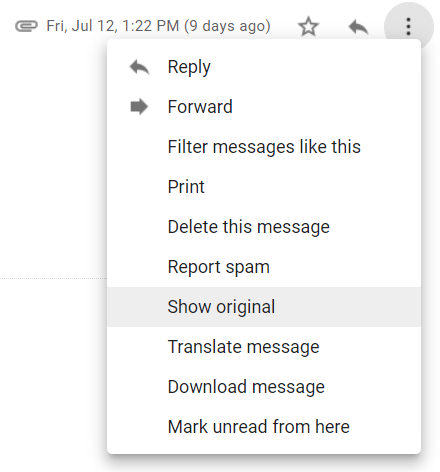Dealing with PayPal disputes is a stressful and time-consuming exercise. For artists, it’s very difficult to successfully counter dispute a fraudulent PayPal chargeback. You’ve likely already experienced this yourself or know of other artists who have. In Archie’s second blog we’ll dive into ways you can plan for a fraudulent PayPal dispute and hopefully win the case!
Background
There are a few main types of disputes and chargebacks. Some filed with PayPal and others with the customer's bank linked to their PayPal account. Broadly they fit under a few different categories:
· This transaction was fraudulent,
· The item wasn’t delivered, or
· The item was different from what was described.
PayPal disputes are similar to going to civil court. You’ll be required to provide evidence that you have been wrongfully accused of mistreating your client. The more evidence you can provide the higher your chances of a favourable resolution.
Never ignore a dispute
Even if the value of the dispute is small and you aren’t troubled by the financial loss you should always counter dispute a fraudulent dispute. Not only will you automatically lose a dispute if you don’t argue it, but it also tells PayPal that you agree on the legitimacy of the dispute – basically admitting that you did something wrong! PayPal monitors and logs this behaviour and if you have a bad reputation with PayPal it will make it more difficult to counter dispute a claim in the future.
This works in reverse too. If a dispute is genuine, resolving it quickly and amicably reflects well on you as a freelancer. Arty always counter disputes fraudulent PayPal chargebacks on behalf of the artist, taking away some of the evidence collection effort required by you.
Have clear and precise descriptions, pricing…
When you counter dispute, include screenshots of you informing your client of exactly what you were going to deliver, the cost, and their approval of any policies / terms and conditions you have. The more precise you can be with your descriptions the better. You’re in for a bad time if you didn’t describe the piece well or if PayPal thinks you weren’t upfront enough with the price.
Artist’s using Arty to deliver commissions will know we guide you through writing commission descriptions (maybe we’ll make a blog about it!) and these are incredibly important during the dispute process. You don’t want to rush this.
…and timeframes!
Don’t forget to speak to the client about the expected completion time for the commission before they pay. It’s always better to add a couple of days onto what you initially think to cover yourself if anything interrupts your work. If you end up delivering before the expected date, you’re a Rockstar and your client will appreciate it! Remember to provide evidence of your client agreeing to the timeframe. Every commission on Arty has a clearly defined time which is agreed on by the client when they purchase the commission.
Deliver the commission to the customers PayPal E-Mail address
Proving that you delivered the commission the client is necessary to successfully counter dispute a “Product not delivered” claim. This is very difficult to do on your own, especially if the fraudster submits altered or fake screenshots that “prove” you didn’t deliver the commission to them. Your case is strengthened if you can provide the E-Mail headers proving that you sent the commission to the same E-Mail address they use for PayPal. This establishes a link between the PayPal transaction and delivered files. Each E-Mail client has a different method of finding the headers. In Gmail, find the E-Mail in your Sent folder and using the menu on the right-hand side click ‘Show Original’.
This will give you the option to download the entire E-Mail including the headers, or you can copy & paste or screenshot the E-Mail contents including the headers.
Be very wary about delivering commissions to a different E-Mail address if you can’t conclusively prove the link between your customer, that PayPal account, and their other E-Mail address.
Prove the customer asked for the commission
To fight fraudulent chargebacks, you need to prove the person who paid for the commission is the same person who approached you and asked for it. Remember this evidence must tie them to their PayPal E-Mail address so providing Twitter DM’s or Facebook messages are not going to be sufficient proof. One way of doing this is by requesting your client’s PayPal E-Mail address before payment and having them reply to an E-Mail from you containing the commission details, cost, timeframe, revision policy, and any other policies or terms and conditions you have. Arty shows the customer all the commission details on the payment page, making it very clear what they are purchasing.
Track E-Mail events
Okay, this one is very difficult to do on your own but if you can find a way to embed a tracking pixel in your E-Mail you can collect details such as:
· When they opened the E-Mail,
· What links they clicked within the E-Mail,
· What device they were using, and
· Their IP address.
This further strengthens your claim that the client received and acknowledged the receipt of the commission. Arty tracks all E-Mails and collects information on payment, commission acceptance, and commission downloads and can provide this in the event of a dispute.
Deliver a physical product
Sounds crazy right? But PayPal was built for physical products and can’t offer the same protections for digital items. Therefore, if you ship your customer a printout of the commission, a thank you letter, stickers or some other lightweight item, you can conclusively prove to PayPal that goods were delivered. Make sure to require a signature on receipt of the item so there’s no chance the fraudster can claim they never received it.
This makes more sense for large commissions where shipping something (potentially internationally) won’t take a sizeable cut out of your profit. Keep the postal receipt and a picture of the envelope with the tracking code on it and submit this as evidence along with everything else.
Let someone else worry about this stuff
Counter disputing fraudulent chargebacks are an unfortunate part of the business. They are also stressful and time-consuming. If you saw our last blog, we spoke about how damaging to your income having to deal with “non-art” things are.
Arty has been battle-hardened to defend artists against fraudulent disputes. We can’t promise we’ll win every time, but we can promise you’ll be in good hands. Arty has measures to automatically collect and submit a large amount of evidence upon a suspected fraudulent dispute being opened. We frequently fine-tune our counter dispute process and work with PayPal and our other payment gateways to ensure we are delivering all the evidence required.
In Conclusion (or the tl;dr)
PayPal is both a blessing and a curse for digital artists. We can’t guarantee that using these techniques will protect you 100% of the time, but with solid evidence, you are far more likely that a dispute will resolve in your favour. To quickly recap the tips:
1. Don’t ignore a dispute, even if it’s for a small amount,
2. Prove you provided a clear description and price,
3. Prove the client agreed to the timeframe (and that you delivered within that timeframe),
4. Always deliver the commission to their PayPal E-Mail address,
5. Prove that PayPal E-Mail address agreed to purchase the commission,
6. Track E-Mail events such as opens, link clicks, device, and IP address,
7. Deliver a physical product, and
8. Let Arty do a lot of this stuff for you.
I hope you enjoyed this blog, and please help your artist friends by sharing it with them! Until next time ✌



